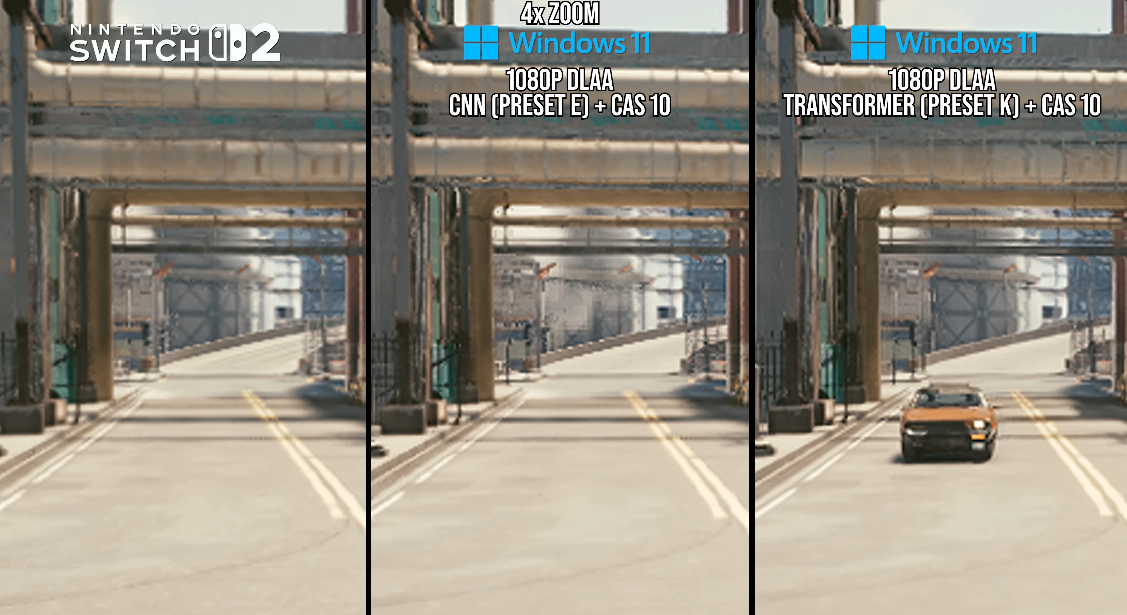Nintendo’s next-gen console, the Switch 2, is also showcasing different versions of NVIDIA’s new DLSS (Deep Learning Super Sampling) models. According to a new Digital Foundry breakdown by tech analyst Alex Battaglia, the system actually supports two versions of DLSS: a standard model and a lighter, performance-focused alternative designed specifically to cater to the hand-held hybrid’s hardware limitations.
In his deep dive, Battaglia examined how DLSS behaves in Switch 2 titles currently in development or testing, including Cyberpunk 2077, Street Fighter 6, Hogwarts Legacy, Star Wars Outlaws, The Touryst, and Fast Fusion. His findings showed that the traditional DLSS mode functions almost identically to the PC version’s CNN-based model, offering improved anti-aliasing during motion, cleaner transitions during camera cuts, and a more stable overall image. However, this beefier model is currently only being used in games that upscale to 1080p resolution, a telltale sign of its processing demands.
The second variant, dubbed “DLSS Light,” is a leaner, less resource-intensive implementation. It produces a sharper still image and can upscale well past 1080p, but its limitations become apparent during camera motion or heavy action scenes, where it temporarily disables certain reconstruction techniques and reveals raw, unfiltered pixels. Despite those trade-offs, this version reportedly consumes about half the frame-time cost of the full model, making it far better suited for high-resolution upscaling on the Switch 2’s power envelope.
To validate the findings, Battaglia reached out to an unnamed developer familiar with the console’s DLSS integration, who confirmed that both presets exist within the dev environment. This insight also suggests that the Switch 2’s GPU works with multiple DLSS configurations, potentially allowing developers to choose which model best fits their game’s performance targets.
The Switch 2 will be the first handheld gaming system to natively support NVIDIA’s AI-powered upscaling technology, marking a major leap in how portable hardware handles demanding visuals. So far, only third-party studios have leveraged DLSS on the system, likely because Nintendo’s internal engines haven’t yet implemented it. However, once first-party developers begin tuning their games for the hardware, the results could set a new benchmark for portable console graphics.
Whether “DLSS Light” becomes the standard for Switch 2 or simply an option for certain games remains to be seen, but one thing’s clear: Nintendo and NVIDIA are making waves with their
I am a UAE-based tech writer who likes to build and benchmark PCs both professionally and as a hobby. I contribute to multiple tech publications, including TechRadar and NotebookCheck, as well as Game Rant, where I focus primarily on news, commerce, and buying guides. When I’m not scouring the internet for the latest in tech stories, you will find me playing a game of Civilization or DotA with friends and frenemies alike while dropping recommendations for Apple TV+’s Foundation to everyone I come across.


